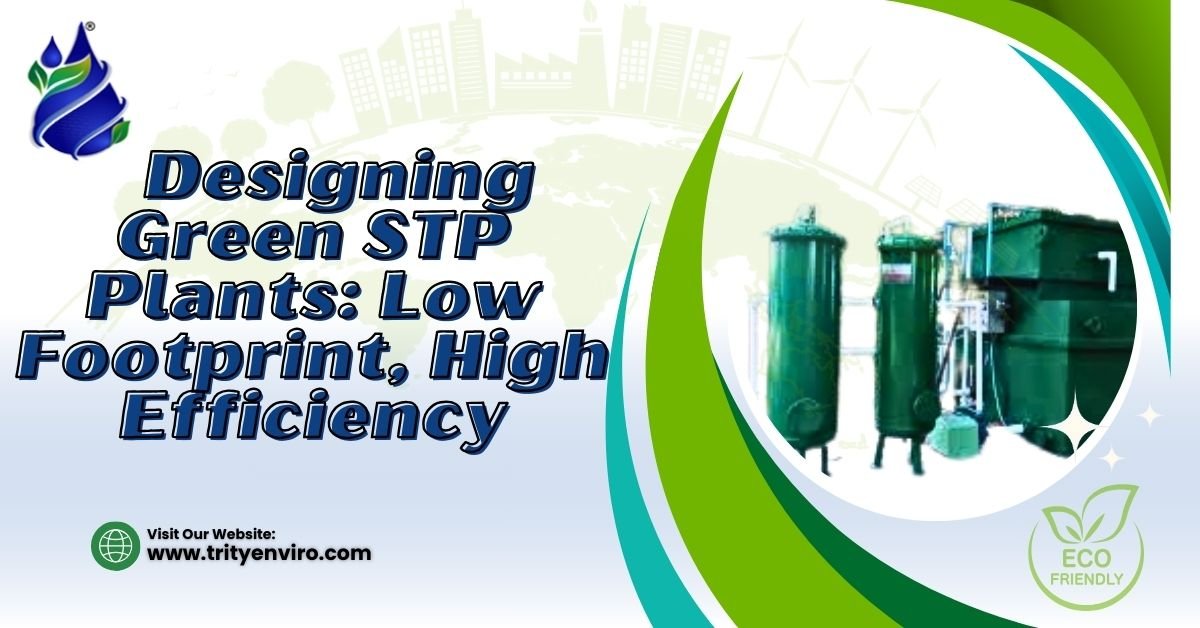
Introduction
Today cities across the region wants to be sustainable, and sewage treatment is the key to achieve this. The decrease in land and the increase in tough environmental laws have made using green STP designs more significant than ever. The plants must be able to handle all the treatment while taking up very little room. A properly built STP helps conserve water, cuts down on pollution, and makes the environment cleaner. It involves treating wastewater to make it clean again and keeps natural bodies of water pollution-free. Today we are going to look at how STP plants use efficient and environmentally responsible methods to produce clean water.
What Makes an STP Plant Green and Eco-Friendly?
A green STP plant tries to use less energy, recycle water, and minimize the use of chemicals. The facility relies on MBBR and SBR techniques, both of which provide top performance and low space requirements. They make it possible to use less electricity and cut down on emissions. Another way green STPs are environmentally friendly is by adding odor control, less noise causing equipment, and green zones for the least possible impact on the area. Plants built today are more likely to use solar or a mix of energy sources to break free of grid connection. Besides, green STPs generate by-products that we can recycle, such as bio-sludge and water containing nutrients useful for gardening or factories.
Design Principles for Low-Footprint Sewage Treatment Plants
Engineers usually build tanks side by side or burrow them underground to decrease the amount of surface space needed. The decision between circular and rectangular tanks depends on the amount of land and the amount of wastewater to treat. The small size of MBBR units lets you introduce a larger biological load into a given volume.
By using more automation, we can do away with large control rooms and save space. Integrated and prefabricated systems combine the various treatment processes in a single smaller unit. They are fit for apartments, hospitals, and industries in cities where there is not much space available. These types of sewage treatment plant designs give the chance to build gardens or parking lots above where the treatment process occurs.
Energy-Efficient Technologies for Sustainable STP Operations
1. Aeration systems with variable frequency drives (VFDs)- The device changes the flow rate to meet the oxygen demand of the sewage at the present time. They reduce the amount of power the appliances need and extend how long they will last.
2. Solar-powered pumping and lighting systems- Companies commonly install solar panels on the unused areas of STPs to generate safe energy for use within the plant. By using solar energy, you save money on your electricity and can still rely on them during power outages.
3. MBBR biofilm technology- Thanks to the media made from plastic, bacteria in the tank can easily consume the waste. Consequently, fewer tanks are needed, and the system can treat more water at the same time.
4. Automated sludge drying units- They get rid of water and press the sludge with the least amount of energy used. It leads to less waste being created and helps save you money.
5. PLC (Programmable Logic Controller) based automation- The PLC keeps watching the machine’s key parameters and adjusts the pumps, the motors, and the valves accordingly. So, the companies can avoid mistakes and use less energy overall.
Smart Space Utilization in Compact STP Designs
1. Vertical tank integration-When you arrange tanks vertically, they take up less surface area. Gravity ensures a smooth flow, so you spend less energy and material on pipes.
2. Underground STP structures- An underground treatment plant enables parking or landscaping above it. It achieves the most use of land space for residences and businesses.
3. Prefabricated modular units- Ready-to-install materials save a lot of time during the construction phase. Because these structures are smaller, they can transport or build bigger as required.
4. Containerized mobile STPs-Companies place these plants in shipping containers, and users can utilize them at different temporary or remote locations as well. They make the plants equipped with everything needed, and crews require little civil work before starting its use.
5. Integrated treatment chambers- By performing aeration, settlement, and disinfection together in one tank, it becomes possible to use fewer units. It is a good fit for places where space is extremely limited.
Benefits of High-Efficiency STPs in Urban and Rural Areas
Properly operating STPs help protect the environment and boost the local economy. By reusing water in the garden, for flushing, or for cooling factories, people use less freshwater. Without them, untreated sewer water would pollute city lakes and rivers, as well as the ground below them. Plants like these help municipalities follow clean air and sanitation rules. In rural places, schools, villages, and small groups are connected to decentralized STPs. This means that waste can be handled close to where it is produced, avoiding large sewer systems. Wastewater treatment ensures that the water used in these plants is safe for reuse and reduces contamination risks. Treated water helps with farming and prevents illnesses caused by contaminated water. Moreover, STPs running at a higher efficiency spend less on energy and require less frequent maintenance.
Conclusion
Now, having a green approach to STPs is necessary for the proper development of society. The space-saving nature, power-saving features, and smart features mean they suit homes in cities or countryside areas. Plants that are more efficient use less land, save water, and reduce how much the farm has to pay in the future. Trity Enviro Solutions provides top-notch green STP plants that are both compact and highly effective. Their state-of-art equipment, engineering skill, and environmentally friendly vision make them the top selection for smart sewage treatment systems.


